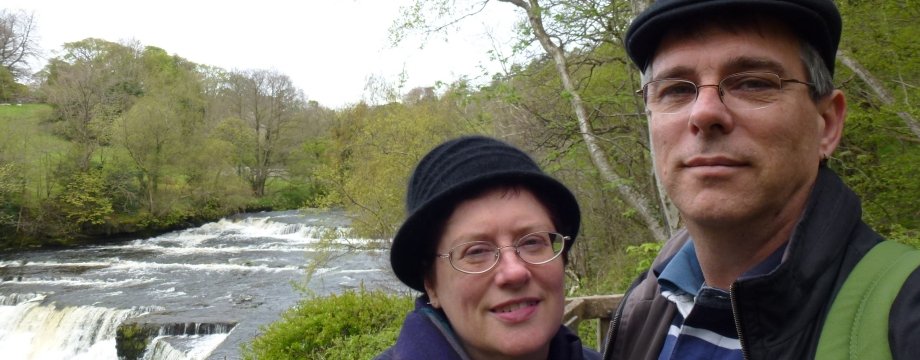One of many reasons to travel to Cambodia is to visit the myriad of ancient temple complex ruins. Indeed Angkor Wat was on our bucket list, but in researching this trip it became abundantly clear that there are lots (read really lots) of temples to discover, from many eras, in many styles, in various states of decay and restoration.
We booked a 2 day personal tour through angkorguidesam.com and chose the 2 day classic (mini & grand tour) which looked like it was both extensive and informative. Our guide, Somondy, turned out to be absolutely fantastic, astutely judging our levels of fitness and fatigue, guiding us to the very best vantage points, helping us avoid the hordes of Chinese tourists, and really being personable and informative about all things Temple and Cambodia. We cannot speak more highly of him, his guidance really made the 2 days unforgettable.
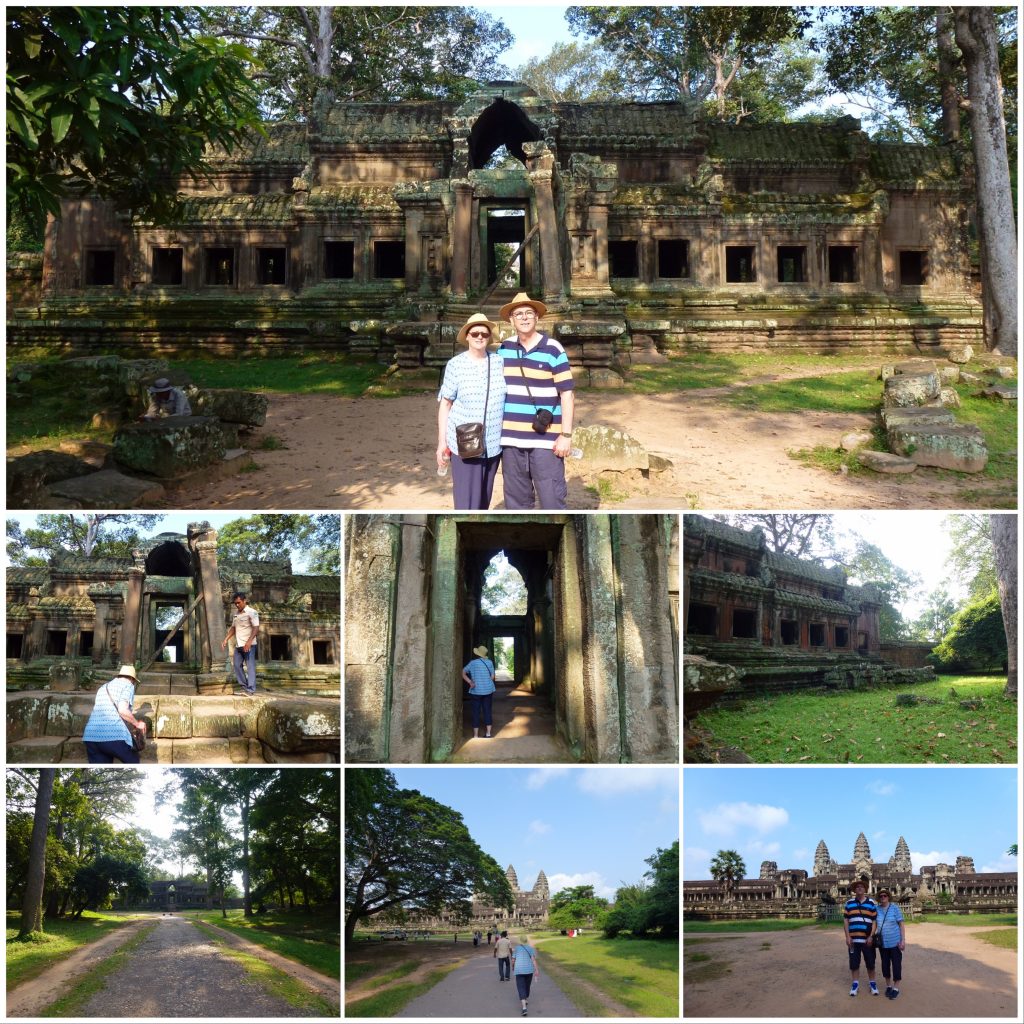
Day 1 we started early (to avoid the crowds and the heat) and headed to the tourist ticket centre (you buy a pass that lets you access the temples for a number of days, it has passport photos and other details, that are checked at temple entrances for all non-Cambodians, natives are free to visit all temples, as they are still considered places of worship). Passes secured we then headed to Angkor Wat, probably the most famous of the temple complexes.
Some context: ALL currently accessible temples have been reclaimed from the jungle – some to varying degrees. Due to the tropical climate, jungle grows really fast. Banyan tree seeds are deposited in the roofs of buildings by bird and monkey poop and grow between the stones, gradually tearing the structures apart. Add to this the fact that much of the land here was saturated with bombs during the war, and studded with land mines (still a massive problem) and we realise that visitable sites have had a LOT of work done on them to restore, reconstruct and stabilise stone structures built centuries ago WITHOUT MORTAR (yep, just mounds of perfectly joined stacked stones). This in itself is remarkable, but the scope and scale of these temples is mind blowing. Add to this that most of the temple complexes are built on swampy land, that relies on the natural buoyancy of the water table so they do not sink and you begin to appreciate the magnificence of the engineering, let alone the architecture, which is something else entirely.
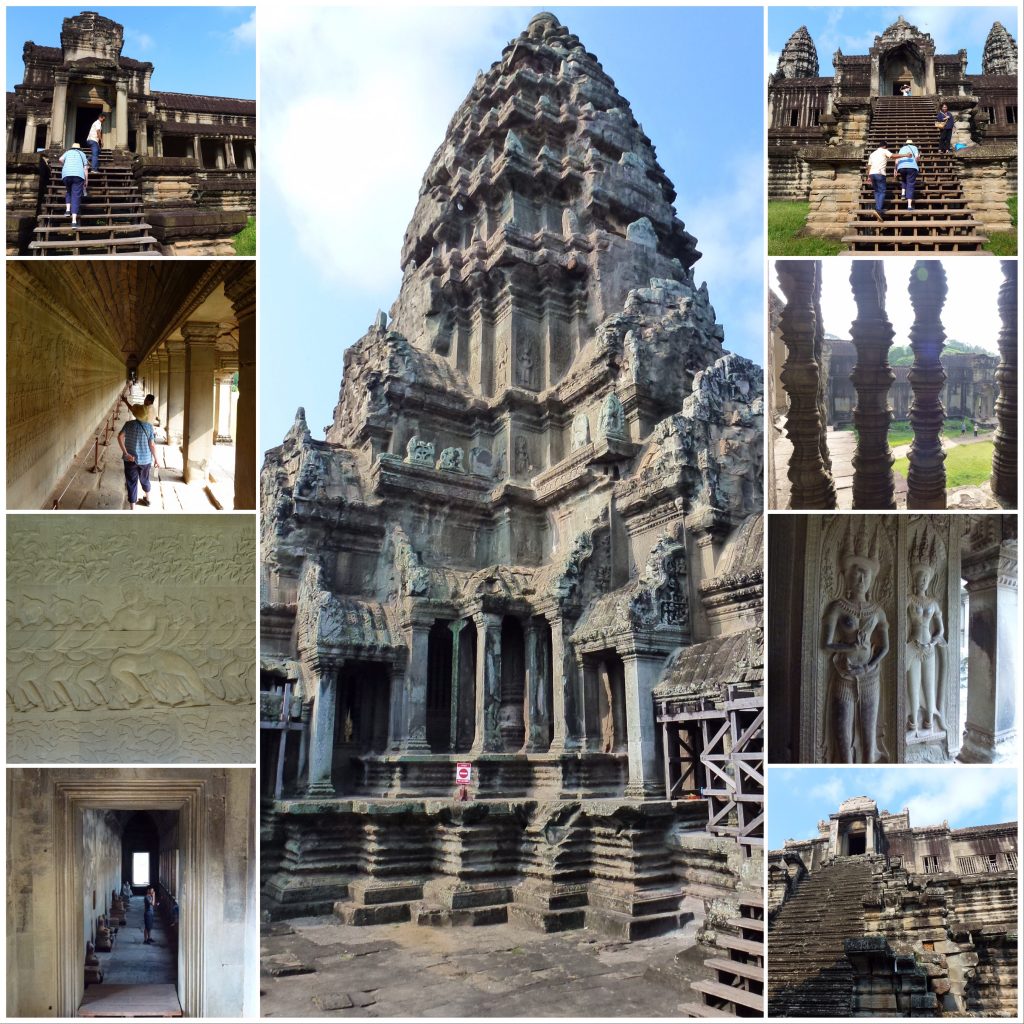
Angkor Wat is square ish, about 1.4km per side, has a 200m wide moat (hand dug), massive outer walls, 4 gated entrances, each a compass point, inner walled compound, consisting of stone plinth, stairways to the upper levels, cloister-like galleries encircling mountain-like towers surrounding a central tower at the highest level. I thought I understood its scale, until we entered the east gate and began walking to the inner compound. Rising from the ground are massive stone buildings, with cliff-like stairs. The journey towards enlightenment is supposed to be a struggle – this is enforced by the design of the buildings – to go higher you have to negotiate breathtaking flights of stairs.
The building complex is astonishing on many levels, but from an astrological perspective it is aligned so the king can watch sunrise through planned meridians on both summer and winter solstice, Angkor Wat is the worlds largest calendar. The configuration of the towers and their designs are informed by seasonal information, lucky numbers and complex astrological calculations that, alone, are amazing. When combined with the engineering and architecture, it is little wonder lunatic conspiracy theorists suggest aliens dunnit.
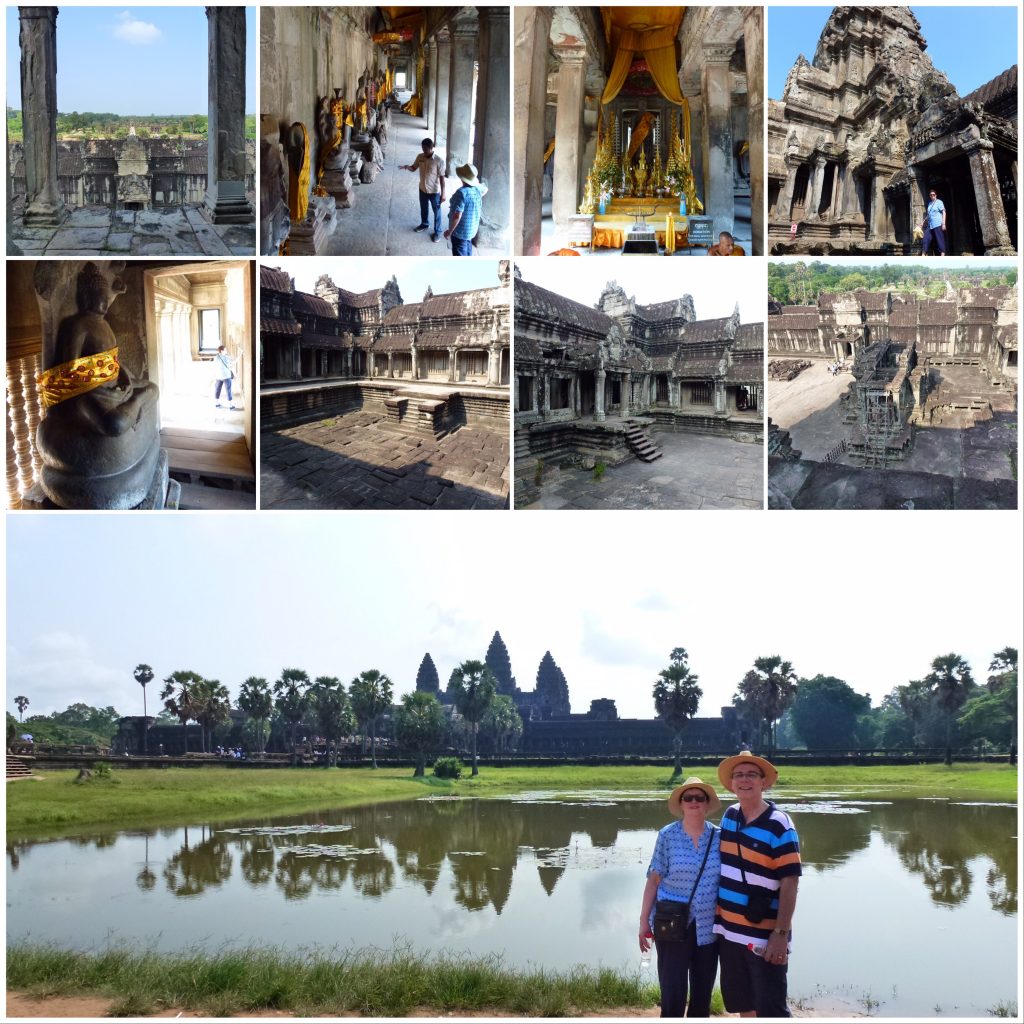
We explored, climbed to the top, marvelled at the geometry and layout of what must have been a thriving place of worship, then left by the west gate (most people enter here). The vast terraces still hold remnants of buildings like libraries, but the miasma of timber dwellings, promenades and other infrastructure necessary for living is long since lost – timber is food for termites, Cambodia is rife with them.
From Angkor Watt we then headed to Angkor Thom, an even BIGGER complex (at 10 square kilometres) and began exploring the many temples within this walled and gated compound. There are 5 gates, oddly 2 on the eastern wall (one called the “ghost gate” was used for funeral processions to cremate outside the temple). Here we first saw clear evidence of good and evil: 54 gods playing “tug of war” against 54 demons using a Naga (or many headed snake) as the rope, with Buddha looking on (because, apparently only Buddha can appreciate the balance between good and evil, and value them both). We saw statues of Buddha sitting on a coiled naga, with the head of the naga (a multiheaded cobra) providing shade everywhere. Sadly most statues were incomplete, missing heads, hands and feet (because the Khmer Rouge discovered these bits of antiquity fetched good prices on the black market, and funded their war efforts this way).
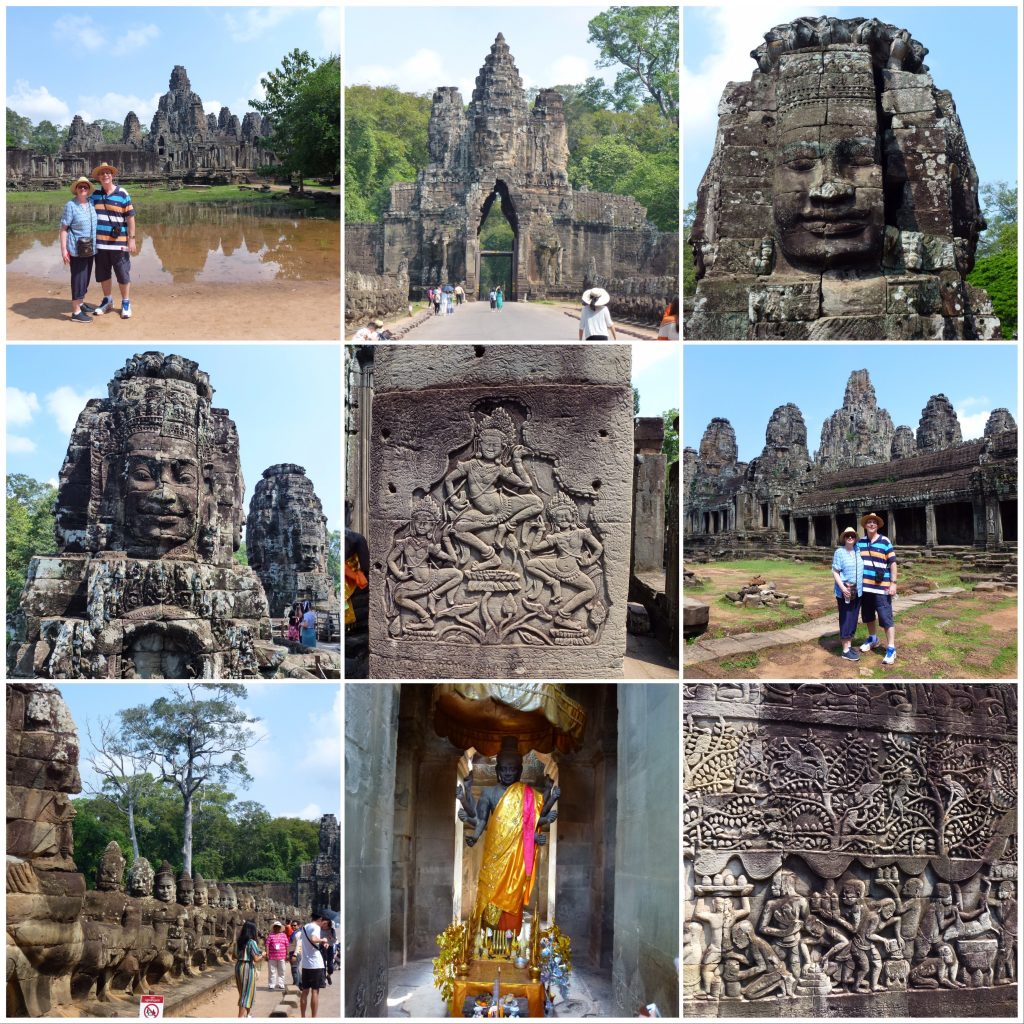
Inside Angkor Thom we walked through the towering South Gate, through the Bayon complex (named after a French archaeologist who re-discovered it). Bayon was the first temple we saw with huge faces adorning the compass points of each tower. Serene faces thought to be images of Buddha or the king, or gods and demons (no one is really sure). From here we headed to Baphuon, a small tumble down jungle temple we both loved. We then trekked to the Wall of Royal Palace, then up and over the Elephant & Leper King Terraces, remnants of infrastructure on a massive scale. Our guide then decided to stop for lunch, we ate well (if a little expensively by local standards) before heading (at lunchtime) to the jungle temple “Ta Prohm”, used in the filming of “Tomb Raider”. This strategy seemed to be a good idea, and worked brilliantly to avoid the herds of Chinese tourists that had been bussed to lunch.
We really loved the tumble-down jumble of temple remains, mossy carvings, and Banyan Tree root cleaved structures. Vast piles of rubble, partially collapsed passageways, tree root curtains and dramatic precarious gaps in leaning massive walls made for striking scenery – perfect for Lara Croft to find the hidden treasure we all know must be there somewhere. Adjacent were vast fields of numbered mossy stones, awaiting someone to piece together one of the universes most complex jigsaw puzzles.
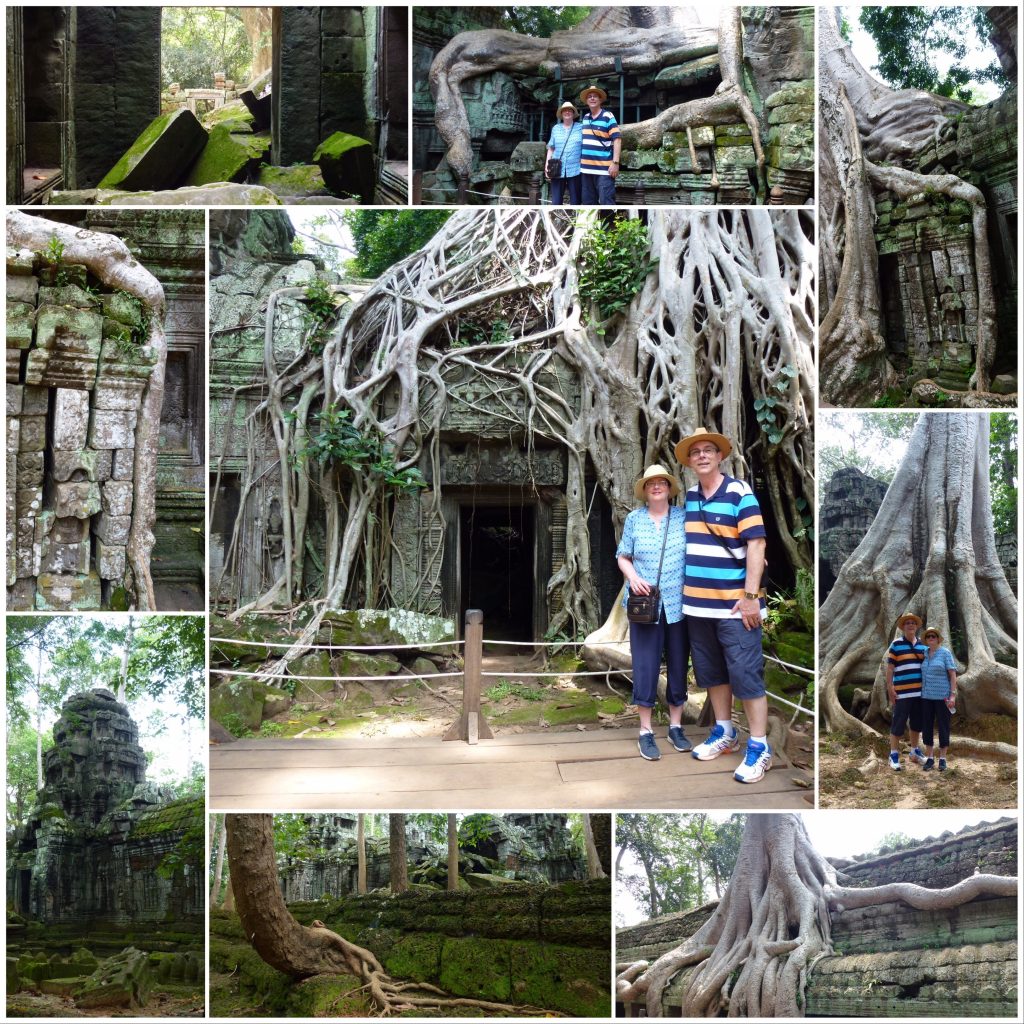
After Ta Pron, we drove to Ta Nei, another “jungle” temple, closed to public view inside because of the tumble-down ceilings, trees growing up through walls and general jungle taking over again vibe. Conservation and preservation will eventually come here but for now it’s charm lies in the fact that a great and powerful building is undone by time and nature. It is difficult to remember all the names, or whether I forgot anything as the day was long, it was baking hot and so humid you could cut the air with a knife. None the less, when we finally said “enough”, I think we had seen all but one of the temples on the itinerary for the day, had walked miles, sweated buckets and expended more energy than we thought we had. None the less it was a brilliant day, so many moments of awe and wonderment, so difficult to convey with mere words or pictures.
Day 2 was the outer circuit, car travel far and wide to see temple complexes further away and, to our surprise, we saw a whole lot of different styles, both in architecture, configuration and decoration styles. There were a few ancient kings who were really prolific with their building plans so some commonalities were also seen.
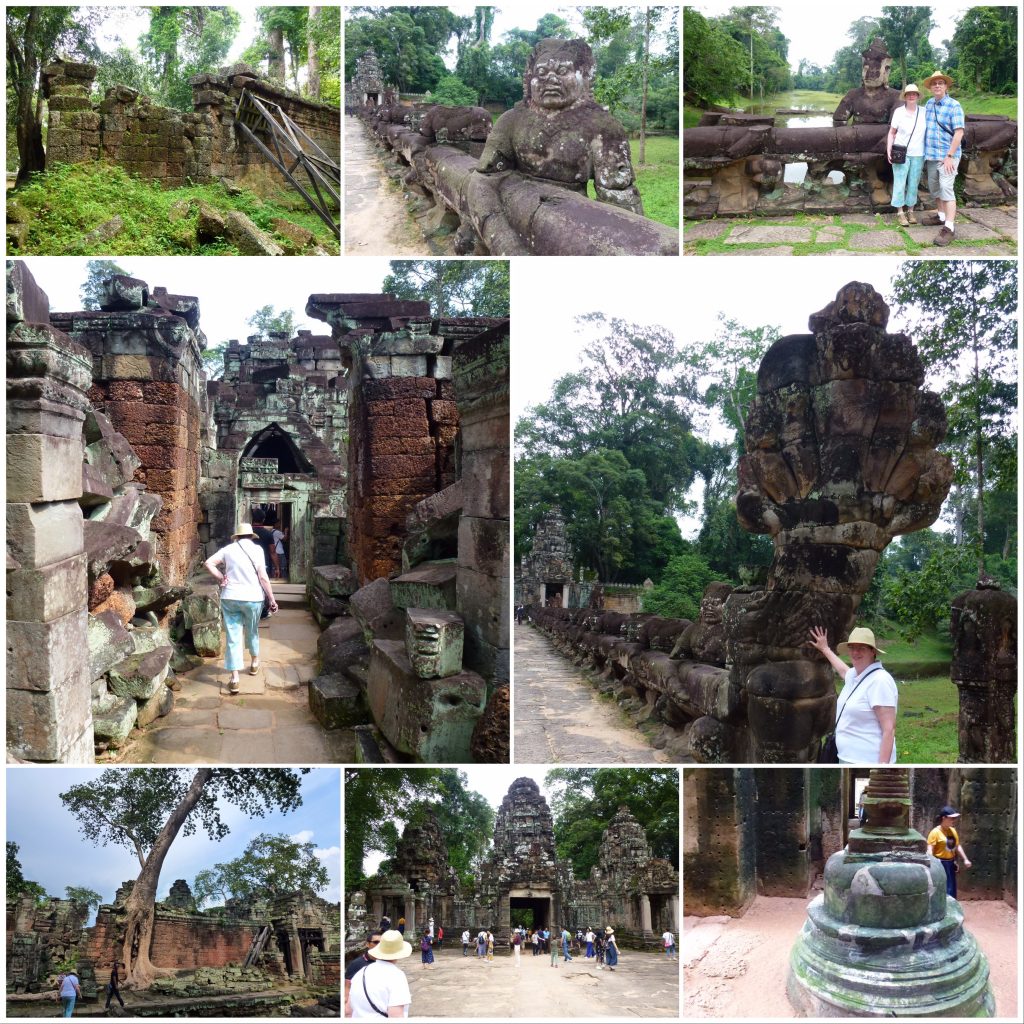
Our first temple, East Mebon, was an “island” temple, originally in the middle of a huge man-made lake (long since dried up and filled in), this temple was a tribute to the water element. Each corner, each level was adorned with beautiful full-size carved elephants. Each of the meridians was guarded by lions (clearly the carvers had never actually seen a lion, but the imagery was at least consistently inaccurate).
On to Ta Son temple, and we were shown that most of the structure was made of bricks (as opposed to quarried limestone or sandstone as was usual). Amazingly, the structure was still largely original, and had brilliantly withstood the test of time. The climb up was perilous, down even wobblier but we made it, puffing and perspiring as the humidity was on the increase, storm clouds rumbling in the distance. Our next stop was Neak Poan, the “hospital” temple on a man made island in the middle of a newly refilled lake. This temple was really different as it offered spiritual healing. Each of the 4 elements were represented by animal fountains at each of the compass points, issuing holy water into pools that pilgrims bathed in to cleanse their spiritual impurities. The central pool had a shrine to Buddha and offered enlightenment. Pilgrims in ancient times came here to pray, cleanse and heal. They bathed in and drank the water. These days, if you drank the water you would need to go to hospital I think.
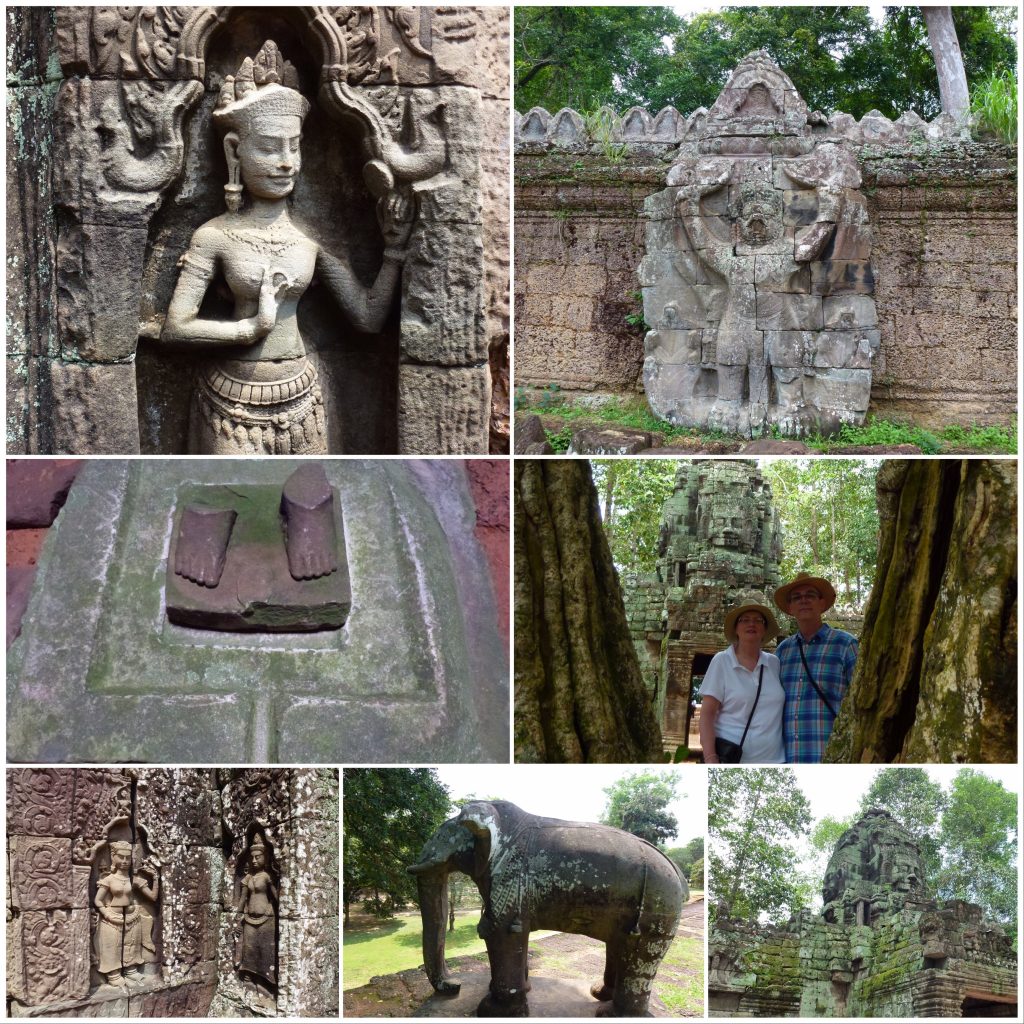
We lunched early, adopting the strategy of visiting temples at lunchtime to avoid the crowds. This far out there were fewer tourists – the roads were rough and the going a bit stomach churning, but only recently accessible by car, so getting popular. After lunch we went to the “Lady Temple”, a small but exquisite rare pink sandstone temple with some of the best ancient carving that exists. Every surface was covered in deep relief work, crisp imagery and decoration, complemented by the pink sandstone made this one of our favourite temples. Charming scenes of gods and men, dancing ladies, animals and floral motifs, just beautiful.
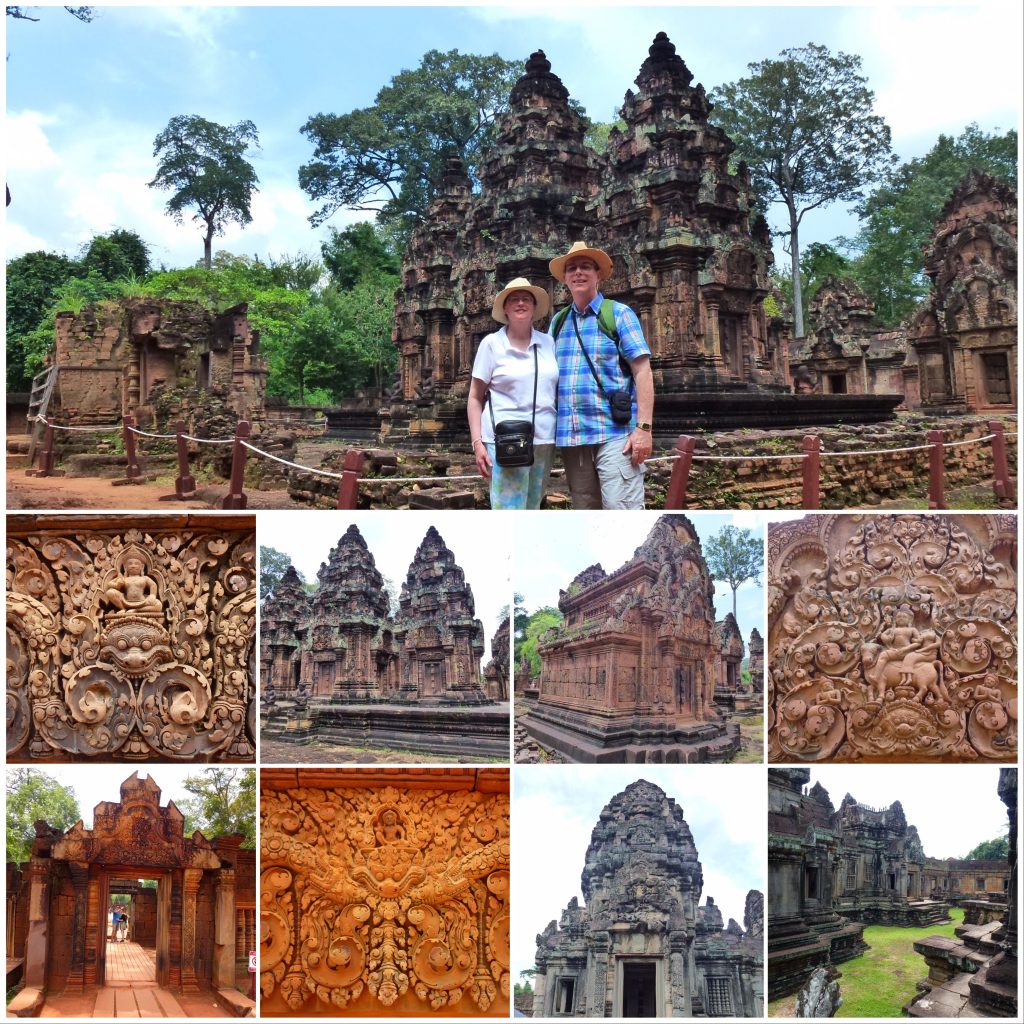
Our last temple was the partially restored Banteay Samre, a temple in the style of Angkor Wat, but much more compact. Built to house the remains of a kings son, it had a lovely collection of inter connected outbuildings around a central tower, covered promenades, naga balustrades and fine carving, a perfect end to what was an astonishing experience. You run out of superlatives, suffice to say we were very happy with our exploration of some of the temples in and around Siem Reap, and would recommend visiting in the cooler times of the year.

